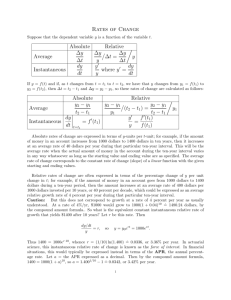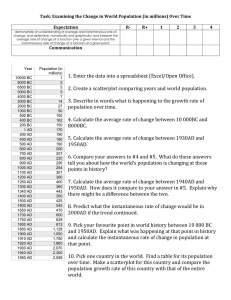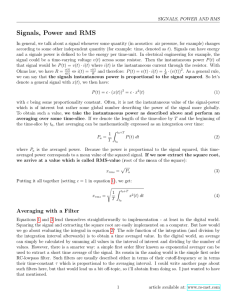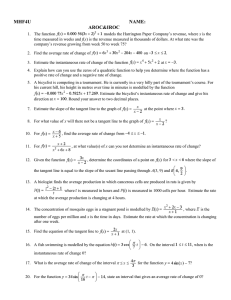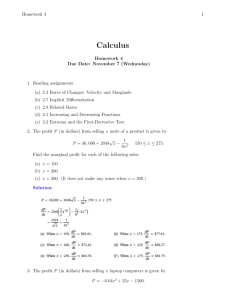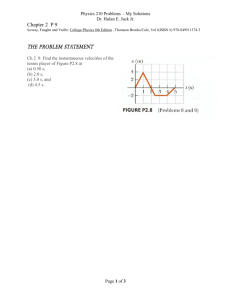Rates of Change Absolute Relative Average ∆y ∆x ∆y y / ∆x = ∆y ∆x
advertisement
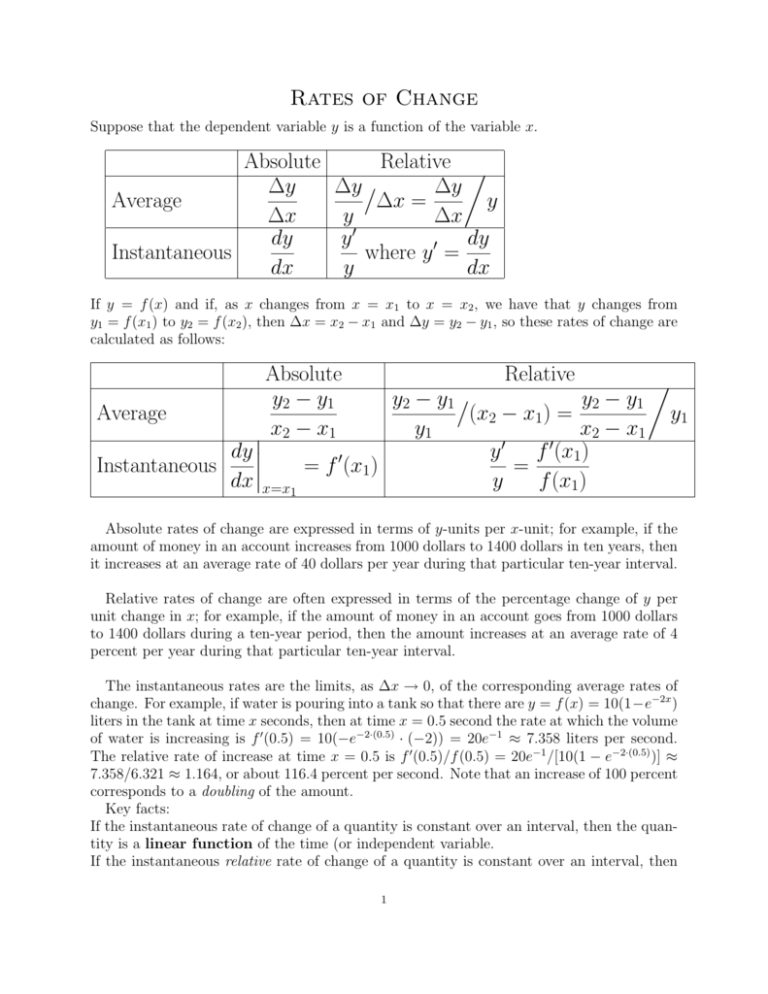
Rates of Change Suppose that the dependent variable y is a function of the variable x. Absolute Relative ∆y ∆y ∆y Average ∆x = y ∆x y ∆x dy y0 dy where y 0 = Instantaneous dx y dx If y = f (x) and if, as x changes from x = x1 to x = x2 , we have that y changes from y1 = f (x1 ) to y2 = f (x2 ), then ∆x = x2 − x1 and ∆y = y2 − y1 , so these rates of change are calculated as follows: Absolute Relative y2 − y1 y2 − y1 y2 − y1 Average (x2 − x1) = y1 x − x y x − x 1 1 2 1 2 0 0 f (x1) dy y 0 = = f (x ) Instantaneous 1 dx x=x1 y f (x1) Absolute rates of change are expressed in terms of y-units per x-unit; for example, if the amount of money in an account increases from 1000 dollars to 1400 dollars in ten years, then it increases at an average rate of 40 dollars per year during that particular ten-year interval. Relative rates of change are often expressed in terms of the percentage change of y per unit change in x; for example, if the amount of money in an account goes from 1000 dollars to 1400 dollars during a ten-year period, then the amount increases at an average rate of 4 percent per year during that particular ten-year interval. The instantaneous rates are the limits, as ∆x → 0, of the corresponding average rates of change. For example, if water is pouring into a tank so that there are y = f (x) = 10(1−e−2x ) liters in the tank at time x seconds, then at time x = 0.5 second the rate at which the volume of water is increasing is f 0 (0.5) = 10(−e−2·(0.5) · (−2)) = 20e−1 ≈ 7.358 liters per second. The relative rate of increase at time x = 0.5 is f 0 (0.5)/f (0.5) = 20e−1 /[10(1 − e−2·(0.5) )] ≈ 7.358/6.321 ≈ 1.164, or about 116.4 percent per second. Note that an increase of 100 percent corresponds to a doubling of the amount. Key facts: If the instantaneous rate of change of a quantity is constant over an interval, then the quantity is a linear function of the time (or independent variable. If the instantaneous relative rate of change of a quantity is constant over an interval, then 1 the quantity is an exponential function of the time (or independent variable.
